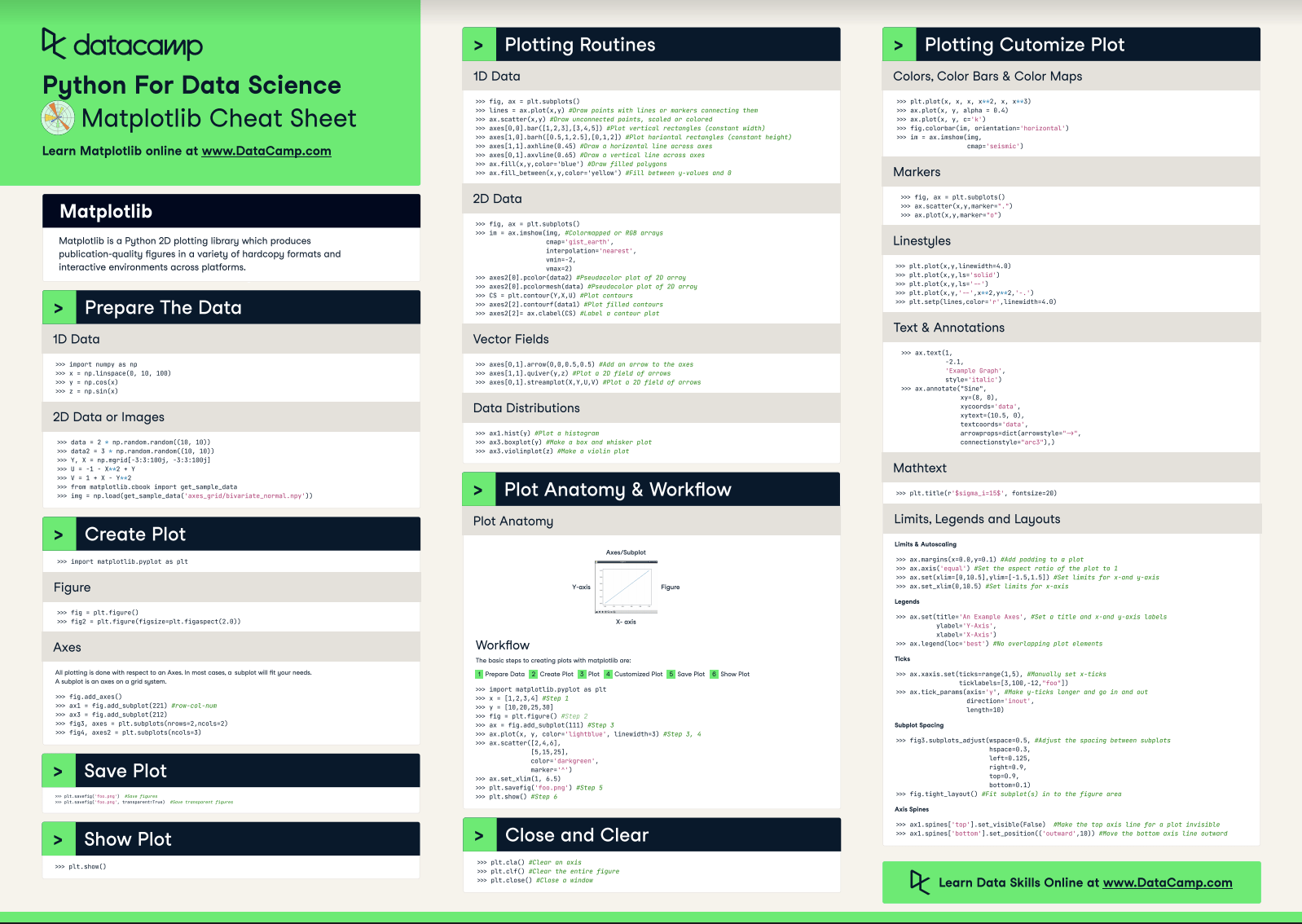Matplotlib Cheat Sheet: Plotting in Python
This Matplotlib cheat sheet introduces you to the basics that you need to plot your data with Python and includes code samples.
Jun 2021 · 6 min read
RelatedSee MoreSee More
cheat sheet
Python Seaborn Cheat Sheet
This Python Seaborn cheat sheet with code samples guides you through the data visualization library that is based on Matplotlib.
Karlijn Willems
2 min
cheat sheet
Python Data Visualization: Bokeh Cheat Sheet
A handy cheat sheet for interactive plotting and statistical charts with Bokeh.
Karlijn Willems
5 min
cheat sheet
Plotly Express Cheat Sheet
Plotly is one of the most widely used data visualization packages in Python. Learn more about it in this cheat sheet.
Richie Cotton
0 min
tutorial
Introduction to Plotting with Matplotlib in Python
This tutorial demonstrates how to use Matplotlib, a powerful data visualization library in Python, to create line, bar, and scatter plots with stock market data.
Kevin Babitz
25 min
tutorial
Line Plots in MatplotLib with Python
This hands-on tutorial dives deep into creating and customizing line plots with Matplotlib, a powerful data visualization library in Python.
Arunn Thevapalan
11 min
code-along
Data Visualization in Python for Absolute Beginners
Learn the basics of how to create an interactive plot using Plotly.
Justin Saddlemyer

